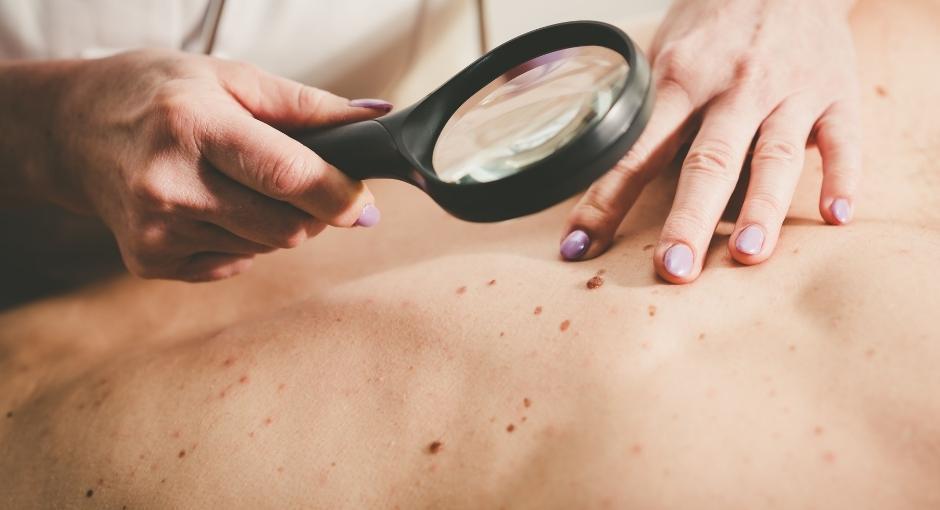Related Conditions
💡 Quick Summary
-
People with Parkinson’s often have shared symptoms and risks for related conditions.
-
People with PD are more likely to develop melanoma, neurogenic orthostatic hypotension (nOH) and pseudobulbar affect (PBA).
-
Preventive care, symptom management and regular check-ins with healthcare providers help improve quality of life with PD.

No two people have the same Parkinson’s disease (PD). With diverse symptoms and varied speeds of progression, PD does not affect every person the same way.
However, people with Parkinson’s share many common symptoms and are at greater risk of developing some conditions. It is important to note that these conditions may be symptoms of Parkinson’s. Talk to your healthcare team to help understand your risks and learn prevention strategies to help you lead your best life with PD.
Know the Symptoms
There are many Parkinson’s symptoms you may not know are related to the disease. From issues with balance and stiffness to anxiety and fatigue, learn more about Parkinson's symptoms and how to manage them.
Melanoma
Melanoma is an invasive form of skin cancer that has been found to develop more often in people with Parkinson’s. Early detection of melanoma means a better chance of stopping cancer from progressing to the lymph nodes. Other risk factors for melanoma are male gender, Caucasian race, constant exposure to ultraviolet (UV) light and family history of melanoma.
Preventative measures that can help reduce the chances of developing melanoma:
- Use the melanoma alphabet to monitor your moles and beauty marks. If you notice any of these changes or irregularities, make an appointment with a dermatologist.
Asymmetrical
Borders are uneven or irregular
Colors such as many shades of brown within the same mole, or even red or blue
Diameter bigger than the eraser on a pencil
Evolution – grows over time, changes color or shape - Wear sunscreen and UV protective clothing daily.
- Schedule a yearly screening with a dermatologist.
Neurogenic Orthostatic Hypotension (nOH)
Orthostatic hypotension (OH) is a persistent drop in blood pressure that occurs upon moving from sitting to standing or from lying down to sitting up or standing. Doctors define it as a blood pressure drop of 20 millimeters of mercury (20 mm Hg) in systolic blood pressure (the top number in a blood pressure reading), or a drop of 10 millimeters in diastolic blood pressure. Certain medications, dehydration and conditions such as heart disease increase this risk.
When OH happens in people with PD or other nervous system disorders, it is called neurogenic OH (nOH). Damage caused by these disorders, including PD, can result in the nervous system not being able to make or release norepinephrine — a chemical that constricts blood vessels and raises blood pressure. This causes dizziness or lightheadedness. The range of people affected by nOH is large; estimates suggest anywhere from 10 to 65 percent of people with PD develop nOH.
This symptom is common in mid- and late-stage Parkinson’s, but can also happen earlier in the disease.
OH symptoms include:
- Lightheadedness
- Dizziness
- Weakness
- Difficulty thinking
- Headache
- Feeling faint
Strategies to manage nOH:
- Speak with your doctor about reducing or eliminating certain medications (such as anti-hypertensives and some dopaminergic medications).
- Drink more fluids to keep hydrated.
- Consume more salt and caffeine.
- Wear thigh-high support stockings. Compression garments such as antigravity stockings can be effective in preventing OH.
- Do isometric exercises before getting up that contract the leg or feet muscles.
- Sleep with your head elevated between 10 and 30 degrees.
- Take care when changing the position of the body (e.g., standing up).
- Be aware of behaviors and circumstances that can make nOH worse:
- Exposure to heat
- Fever
- Prolonged standing
- Vigorous exercise
- Drinking alcohol
- Straining while going to the bathroom
- Meals high in carbohydrates
Ask your doctor about medications that can treat nOH. Learn more at nOHmatters.com
Pseudobulbar Affect (PBA)
Pseudobulbar affect (PBA) is characterized by frequent, uncontrollable outbursts of crying or laughing. It happens when a nervous system disorder, such as PD, affects the brain areas controlling expression of emotion. This disrupts brain signaling and triggers the involuntary episodes. Outbursts are usually brief, though they can be intense and may occur several times per day. PBA is often mistaken for depression or bipolar disorder. The episodes often do not match the situation or the person’s feelings. You may be happy about something but start sobbing or laugh in an inappropriate situation.
Historically, PBA was referred to as “emotional incontinence” or “pathological laughing and crying.” These terms are not commonly used today because researchers better understand the brain and PBA symptoms. Pseudobulbar affect can also occur in people with brain injuries. According to PBA Info, up to 24 percent of people with PD have symptoms that may suggest PBA.
Lifestyle strategies can help manage pseudobulbar affect:
- Keep a diary tracking what triggers PBA episodes and share it with your doctor.
- If you feel an episode approaching, try to focus on something unrelated and adjust your posture.
- During an episode take slow deep breaths until you are in control. Relax your forehead, shoulders and body.
Page reviewed by Dr. Jun Yu, Movement Disorders Fellow at the University of Florida, a Parkinson’s Foundation Center of Excellence.